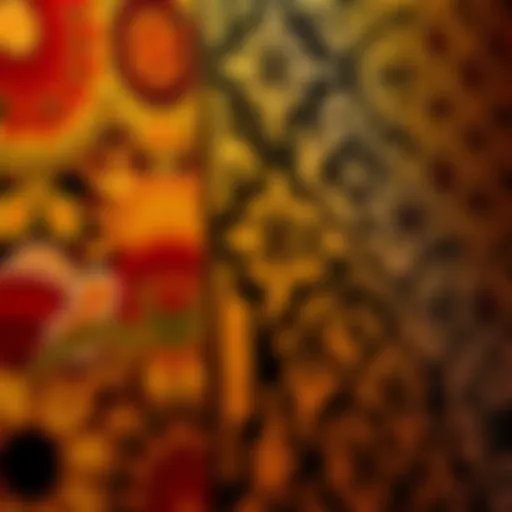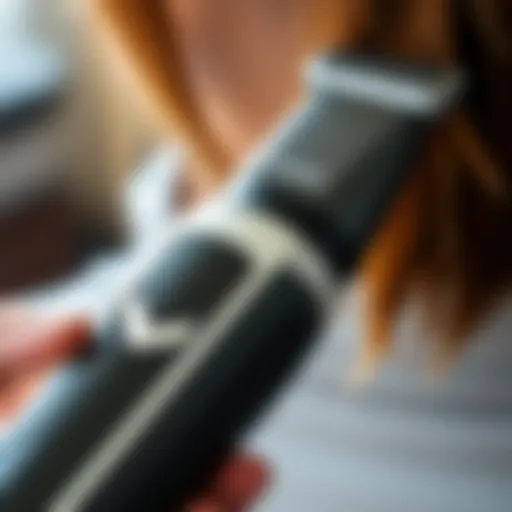Affordable Modest Formal Dresses: A Complete Guide
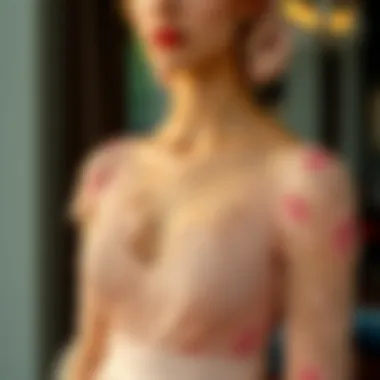

Intro
Navigating the realm of formal dresses can be quite a task, especially when you prioritize modesty and affordability. Society often equates elegance with extravagance, but that’s a misnomer! Rather, it’s completely feasible to find attire that embodies both grace and thriftiness, without sacrificing one for the other. The journey of discovering the perfect dress involves an understanding not just of styles, but of upcoming trends, practical tips for selection, and the nuances of fabric choices.
In this guide, we’ll shed light on the distinct styles that complement various occasions while adhering to the principles of modest fashion. We’ll delve into the latest trends, decode how to mix and match pieces, and help you navigate the waters of affordable formal wear with confidence.
The importance of modest fashion has been gaining momentum, reflecting societal shifts towards inclusivity and sustainability. Today’s fashion landscape insists that you don’t need a bottomless bank account to look chic and sophisticated. From charity galas to weddings, your attire can reflect your unique style without compromising on elegance or ethics.
Let’s begin our exploration!
Understanding Modesty in Fashion
In the realm of formal attire, understanding modesty plays a crucial role. It is not merely about covering up; rather, it encompasses a thoughtful approach to personal expression while adhering to certain standards of decorum. Modern fashion has evolved significantly, and modesty has carved out a vital niche in this evolution. The balance between elegance and restraint resonates across various cultures and personal beliefs, making it a noteworthy topic for those seeking attire that aligns with their values.
Defining Modesty Through Clothing
Modesty in clothing can be described through its essence—what it means to you may vary widely depending on cultural, religious, or personal philosophies. At its core, modesty aims to strike a balance between comfort and self-expression. For some, it involves loose-fitting garments, long hems, and sleeves that offer coverage, while others might interpret modesty through specific styles or color choices without compromising elegance.
Take, for instance, the universally flattering A-line silhouette. This style embodies modesty by gently skimming the body, offering both comfort and a hint of sophistication. Further, embellishments like delicate embroidery can embellish a dress without straying from its modest intent. Choosing fabrics like cotton or silk may further express one’s personal touch while maintaining a sense of appropriate dressing.
Moreover, as noted by the fashion community, modesty doesn't ignore trendy elements; instead, it reinterprets them. Think of fashionable floor-length gowns adorned with swathes of lace—a timeless choice that whispers grace yet shouts style. Many may liken modesty to a canvas; one can paint it with a myriad of styles that reflect individuality while respecting personal values.
Cultural Perspectives on Modest Fashion
Diving into cultural perspectives, modest fashion serves as a reflection of diverse backgrounds and traditions. Each culture brings its own flavor to the conversation, illustrating a broader narrative surrounding what is deemed respectful within fashion. For instance, Eastern cultures often emphasize covering shoulders and knees, as traditional garments like the kimono or sari showcase both cultural identity and modesty.
Conversely, in the West, we might find modesty interpreted differently, often leaning towards minimalist styles that feature high necklines and tailored fits. The popularity of brands that cater to modest dress, such as Aab or Innocent Dresses, highlights how these cultural interpretations are increasingly gaining traction. As such, the notion of modesty transcends being a mere fashion statement; it intertwines with identity, heritage, and respect.
Ultimately, modest fashion is not a monolith. It adapts and thrives because of the diverse influences shaping it. When you delve into the world of modest dress, you discover a spectrum that celebrates individuality while respecting shared values and beliefs. Understanding this rich tapestry is essential for anyone curious about modest and affordable formal dresses.
"Modesty is not about a lack of allure; it's an invitation to explore the depth of personal style without the limit of skin exposure."
By appreciating these cultural nuances, one can appreciate how global influences shape modern modest fashion. This creates a space for both style enthusiasts and everyday wearers to express themselves meaningfully through choices that reflect their individual or community ideals.
The Value of Affordable Fashion
When it comes to choosing formal dresses, especially those that fit within a modest framework, understanding the value of affordable fashion cannot be overstated. This section aims to illuminate the profound impact that budget-friendly options can have on personal style, sustainability, and accessibility. It’s not just about finding dresses that won’t break the bank; it encompasses a larger conversation regarding ethical fashion, self-expression, and the evolving landscape of the industry.
Understanding Budget Constraints
Navigating budget constraints is often the first hurdle faced when looking for formal attire. Whether preparing for a big event or simply refreshing a wardrobe, knowing your financial boundaries is key. Many individuals find themselves in search of a dress that is both elegant and reasonably priced, but the challenge lies in balancing quality with cost. Here are several factors to consider:
- Personal Financial Assessment: Start by evaluating your spending capacity. This includes not just the price tag on the dress but also ancillary costs like shipping, tailoring, and accessories. Oftentimes, purchasing a more expensive piece without considering all these factors can lead to budget overruns.
- Event Specificity: Different occasions will often have different expectations for formality and style. Being clear on what’s needed can help narrow down the options significantly—there's little point in splurging on a gown for an event where semi-formal is the norm.
- Research and Comparison: Utilize resources like websites and forums to check prices across various retailers, whether it's local thrift stores or established online shops. This research can often reveal significantly lower prices or hidden gems that otherwise may go unnoticed.
By understanding your financial limits, the search for a modest formal dress becomes less stressful and more focused, allowing for thoughtful choices that align with both personal aesthetics and budgetary realities.
Quality Versus Cost
In the fashion world, the relationship between quality and cost often sparks debate. With affordable fashion, there is a common perception that lower prices equate to poorer quality. However, this assumption can be misleading. Here’s a deeper look into how to discern good quality while staying within a budget:
- Fabric Composition: Look for dresses made from natural fibers like cotton, linen, or silk blends. While synthetics such as polyester may offer easier care and lower prices, they can often lack the breathability or durability of their natural counterparts. Understanding fabric types can help in making informed decisions that uphold both style and comfort.
- Construction Matters: The way a dress is assembled will largely affect its longevity and fit. A well-constructed garment will often feature double stitching, quality zippers, and reliable seams. Check online reviews and garment descriptions to gauge construction standards before making a purchase.
Investing in a well-made dress, even if it costs a bit more initially, can save you money in the long run by eliminating the need for frequent replacements.
- Timelessness of Design: Sometimes, spending a little extra on a classic style ensures it remains relevant over multiple seasons. A simple yet elegant dress can be styled in numerous ways, making it the kind of piece that rewards investment.
Fashion Trends in Modest Formal Dresses
In the evolving landscape of fashion, modest formal dresses have carved out a significant niche. These styles not only align with a variety of cultural and personal preferences but also offer an avenue for self-expression through artful design and strategy. Keeping abreast of current trends is essential for anyone involved in styling, designing, or marketing within this sector. Understanding the latest fashion trends can aid in creating pieces that not only look good but also resonate deeply with individual aspirations and cultural values.
Current Styles for Formal Occasions
The market today is filled with diverse options when it comes to modest formal dresses that appeal to various tastes and occasions. Popular styles often include the following:
- A-Line Silhouettes: This timeless design is flattering on numerous body types, cinching at the waist and flowing to the ground. It offers both modesty and elegance, making it a go-to for formal events.
- Maxi Dresses: Ranging from simple designs to more elaborate patterns, maxi dresses make a smooth statement. They offer a sense of grace while providing coverage, ideal for weddings, galas, and other significant occasions.
- Long Sleeve Trends: Long sleeves add sophistication and modesty. Lace or structured fabrics can elevate the look, allowing for a chic yet refined appearance.
- High Necklines: These are great for several formal settings. Whether it’s a chic mock turtleneck or an embellished high-neck dress, this style remains steadfast in the modest fashion spectrum.
- Layered Looks: Adding layers can transform a basic dress into a stunning outfit. Cardigans, boleros, or overlays can give depth without sacrificing coverage.
Each of these designs reflects a balance between elegance and functionality, allowing for comfort while adhering to modesty requirements. Buyers tend to appreciate versatility; a dress that can transition from day to night will always hold its value.
Seasonal Variations and Their Impact
Fashion is heavily influenced by seasons, and modest formal dressing is no exception. As the climate changes, so do fabric choices, garment styles, and color palettes. Here are some key seasonal shifts that impact the modest dressing landscape:
- Spring & Summer: Lighter fabrics such as chiffon and cotton are favored. Floral prints, pastel colors, and flowing dresses dominate this time, embodying a fresh and airy aesthetic.
- Fall: Earth tones and deeper hues become prevalent. Fabrics such as heavier cottons and soft wools are often selected for dresses, with designs that might include three-quarters sleeves or higher necklines to accommodate the cooler weather.
- Winter: Layers are critical in winter fashion. Full-length sleeves, heavier fabrics, and long layers are necessary for warmth. Deep jewel tones and rich textures like velvet can also make inherent statements about luxury and sophistication.
- Holiday Season: Any formal gathering around the holidays often sees sparkly fabrics, sequined styles, and festive colors. Modest options during this period blend glamor with coverage, utilizing long sleeves and floor-length hemlines.
"Fashion is about dressing according to what’s fashionable. Style is more about being yourself." — Oscar de la Renta
Keeping up with these seasonal variations enables designers and marketers to create collections that resonate with the market's demands. Modest fashion does not negate the influence of current trends; in fact, it adapts and integrates them to suit a broader audience. Each season presents an opportunity to innovate while honoring the core values of modest dressing.
Key Elements of Modest Formal Dresses
Understanding the key elements of modest formal dresses unveils an intricate relationship between style, cultural significance, and personal identity. Modesty through clothing does not have to compromise elegance; rather, it offers a unique opportunity for women to express individuality while adhering to personal or cultural values. In this section, we examine specific aspects like line and silhouette, necklines, and sleeve lengths, highlighting how they intertwine to create a definitive modest aesthetic.
Line and Silhouette Considerations
When considering modest formal dresses, the line and silhouette are fundamental. A well-crafted silhouette can enhance a woman’s natural form without revealing too much skin. For instance, A-line dresses, which gently flow away from the waist, create an elegant appearance while providing ease of movement. This style works wonderfully for various body types, making it a versatile choice that many women can embrace.
Another noteworthy silhouette is the empire waist, where the dress gathers just below the bust, allowing for a longer flowing skirt. This design not only flatters but also ensures modesty through appropriate coverage. An added benefit is how these lines can extend the appearance of height, giving the wearer an elegant stature without compromising comfort.
Moreover, the fit-and-flare shape—similar to A-line but with a more pronounced fitted bodice—can accentuate curves while maintaining modesty. The strategic placement of seams and cuts ensures that a modest dress is both flattering and functional.
"Opting for the right line and silhouette can profoundly impact not only how a garment looks but also how it makes the wearer feel, striking a balance between beauty and confidence."
Necklines and Sleeve Lengths


Necklines and sleeve lengths further define the modesty aspect while adding a touch of finesse to the overall look. A higher neckline, such as a boat neck or scoop neck, ensures coverage while still appearing stylish. For formal occasions, a classic V-neck can be a great choice too, as it elongates the neck, offering sophistication without exposing too much.
Regarding sleeves, there are myriad options depending on the desired occasion. Three-quarter sleeves or bell sleeves offer a touch of elegance and movement, ideal for formal environments. Alternatively, long sleeves can transform a simple dress into a formal piece just with the addition of fabric—think of light chiffon or even embroidered detailing.
The balance between the neckline and sleeve lengths is essential to creating a wholesome appearance that embodies modesty. Consider a dress with short sleeves that features a high neckline, providing a chic look while ensuring coverage.
In summary, the interplay between line, silhouette, necklines, and sleeves shapes the framework of a modest formal dress. Selecting the right elements allows individuals to maintain their values while showcasing their personality and style effectively.
The art lies in choosing carefully curated pieces that illustrate a commitment to modesty without sacrificing elegance.
Materials and Fabrics for Formal Dresses
Understanding the choice of materials and fabrics for formal dresses is pivotal when aiming for both modesty and elegance. The right fabric not only influences the look of the dress but also its comfort and durability. Given the wide array of available options today, having a firm grasp of what different materials can offer will facilitate informed decisions. Whether it’s for an office gathering or a wedding, the fabric’s qualities can make or break the overall aesthetic and feel of an outfit.
Choosing Breathable and Elegant Fabrics
Selecting fabrics that are breathable is essential, especially if you are planning to wear a formal dress for an extended period. Breathable materials allow air to circulate, preventing discomfort and excessive sweating. Some of the materials to consider include:
- Cotton: It is lightweight and allows for excellent breathability. Cotton blends can also enhance the drape of the fabric while retaining comfort.
- Linen: While it tends to wrinkle easily, linen is incredibly breathable and often comes in a range of colors and styles suitable for formal wear.
- Chiffon: This sheer fabric is light and airy. It drapes beautifully and adds a touch of elegance, making it an excellent candidate for layering over other materials.
- Georgette: Even though it resembles chiffon, georgette is sturdier and can provide a bit of warmth while remaining breathable.
When choosing fabrics, it is essential to consider the dress's silhouette. A fitted dress with a breathable fabric will retain comfort without compromising on style.
Comfort is key. A formal gown, no matter how stylish, will fail you if it’s uncomfortable to wear.
Sustainable Fabric Choices
In today’s fashion landscape, sustainability has become a critical consideration for many shoppers. This shift towards eco-friendly practices influences not only purchasing decisions but the overall fashion cycle. Opting for sustainable fabrics helps reduce the environmental impact associated with clothing production. Some noteworthy sustainable fabrics include:
- Organic Cotton: Grown without harmful pesticides, organic cotton reduces soil and water pollution. It’s perfect for dresses that require breathability and comfort.
- Tencel: Made from sustainably sourced wood pulp, Tencel is an eco-friendly fabric known for its soft feel and moisture-wicking properties. It is often used for flowy formal dresses, making it ideal for various occasions.
- Hemp: An often underrated option, hemp fabric is durable and rapidly renewable. It can be blended with other materials to create stunning formal wear that’s also gentle on the planet.
- Recycled Polyester: This fabric is made from recycled plastic bottles or other items. It’s a step towards reducing waste while delivering versatile and affordable options for formal attire.
As fashion evolves, embracing sustainable choices reflects a conscientious approach to consumption. Making informed choices about materials doesn’t just improve your wardrobe; it contributes positively to the environmental conversation.
Occasions for Modest Formal Dresses
Dressing modestly does not mean sacrificing style or elegance, especially for formal occasions. Understanding the significance of modest formal dresses is crucial for those who want to look polished while adhering to their values. Modest attire can be versatile, allowing wearers to express themselves beautifully across various events—from professional gatherings to joyous celebrations. Here, we explore the specific nuances of two major occasions where modest formal dresses shine.
Professional Events and Formal Gatherings
When it's time to don that professional look, modesty plays a pivotal role. In the corporate world, appearances can speak volumes. Thus, a well-chosen formal dress not only projects professionalism but can also foster confidence. The key here is to choose dresses that offer structure and comfort. Think of tailored silhouettes in neutral shades or soft colors. A knee-length or midi dress, for instance, balances tradition and trend without being too flashy.
Combining fabrics is another way to achieve a polished look. Opt for pieces made from high-quality materials like cotton blends or polyester that drape elegantly without clinging. Depending on the climate, adding a light blazer can complete the outfit, providing extra coverage and warmth without compromising style.
In professional settings:
- Dresses with high necklines or boat necks can be both modest and stylish
- Consider long sleeves or three-quarter sleeves to keep the look elegant
- Accessories should be minimal yet impactful; a pair of stud earrings or a simple clutch could add a touch of sophistication
"Dress how you want to be addressed". For professionals, this is especially true. Dressing modestly can enhance one's image and instill a sense of respect among colleagues.
Weddings and Celebrations
Weddings, whether as a guest or a participant, offer an excellent opportunity to showcase modest formal dresses while enjoying the festivities. The goal here is to embrace the joyous atmosphere while respecting the formality of the occasion. Fabrics like chiffon or lace can elevate your look, adding a romantic element without showing too much skin.
When choosing a dress for a wedding, consider these elements:
- Color Palette: Soft pastels or rich jewel tones can enhance any wedding theme while remaining sophisticated.
- Length: Floor-length gowns or tea-length dresses are ideal, striking a perfect balance between form and function.
- Embellishments: Subtle details like delicate beading, embroidery, or ruffles can add character without overwhelming the overall look.
Don’t forget about layering! A modest dress can be complemented beautifully with a bolero jacket or a wrap, which can be removed during dancing. Celebrations are about comfort as well, and when the music starts, you want to be able to move freely while looking elegant.
Sourcing Affordable Options
Finding an affordable formal dress can sometimes feel like hunting for a needle in a haystack, especially if you're committed to maintaining modesty while staying on budget. Sourcing affordable options isn’t just about saving money; it’s about making informed choices that align with your values and personal style. In this section, we will explore different avenues for acquiring formal dresses without burning a hole in your pocket.
Being practical doesn't mean sacrificing quality or style. By focusing on niches such as thrift stores, vintage shops, and online marketplaces, individuals can discover unique pieces that tell a story while remaining elegant and affordable. Moreover, since fashion is cyclical, styles from previous decades often come back into trend, making second-hand pieces not only eco-friendly but also fashionably relevant.
Thrift Stores and Vintage Shops
Thrift stores and vintage shops are often a treasure trove for anyone searching for budget-friendly options. These establishments specialize in pre-owned clothing, providing customers an opportunity to find unique items with a history. Why consider these places?
- Affordability: Prices at thrift stores are generally a fraction of what you might pay for a brand-new dress. It’s the perfect solution for those working with a tight budget.
- Sustainability: Shopping second-hand reduces waste and is often a more environmentally conscious choice. By opting for pre-owned clothing, you’re contributing to a more sustainable fashion cycle.
- Uniqueness: The variety of styles found in thrift and vintage shops is unparalleled. You might uncover a vintage dress that no one else will have, making your outfit stand out in a crowd.
When exploring thrift stores, it's wise to go in with an open mind. Keep an eye out for quality materials, unique designs, and remember that many dresses can be tailored to fit perfectly. You might need to sift through a few racks before finding that gem, but the thrill of discovering a beautiful piece at a great price makes it worthwhile.
"Thrift shopping is a way to reinvent fashion without spending a fortune. Every dress has a story—make it yours."
Online Retailers and Marketplaces
In today's digital age, online retail has revolutionized the way we shop for formal dresses. Websites such as Poshmark, ThredUp, and Etsy offer platforms for finding stylish, modest dresses that won't break the bank. These online marketplaces have several advantages:
- Convenience: Shopping from the comfort of your home allows you to compare prices, styles, and reviews at your fingertips. You can also filter search parameters to find exactly what you need.
- Variety: Online platforms often have extensive collections, ranging from contemporary to vintage styles. This diversity allows for a broader exploration of modest dress options from various cultures.
- Sales and Discounts: Many online retailers frequently run promotions or offer discount codes that can help you snag a deal.
When purchasing online, however, keep a few things in mind:
- Check the sizing charts carefully. Sizes can vary between brands, so it’s crucial to know your measurements.
- Read reviews. Customer feedback can give insight into fabric quality and fit, ensuring you make a well-informed decision.
- Be aware of return policies. In case the dress doesn’t meet your expectations, it’s best to know upfront how returns are handled, especially if it’s a final sale.
In summary, whether you're scouring local thrift shops or navigating the vast sea of online marketplaces, sourcing affordable options for modest formal dresses is an attainable goal. By exploring these avenues, you can find beautiful, affordable pieces that resonate with your personal style while ensuring you remain within budget.
Styling Tips for Modest Dresses
When it comes to finding formal dresses that uphold the principles of modesty and affordability, the way you style these pieces can make all the difference. Styling is not merely about throwing on a dress and calling it a day; it’s an art that involves strategic choices to elevate your look while staying true to your values. With the right techniques, modest dresses can exude elegance without compromising on personal style. Understanding the essentials of styling can empower you to make informed decisions that reflect who you are.
Layering Techniques
Layering is a powerful tool in achieving a modest and stylish ensemble. It allows a person to add depth and interest to an outfit, while adding or subtracting elements to create the ideal modesty balance. Here are some thoughtful techniques:
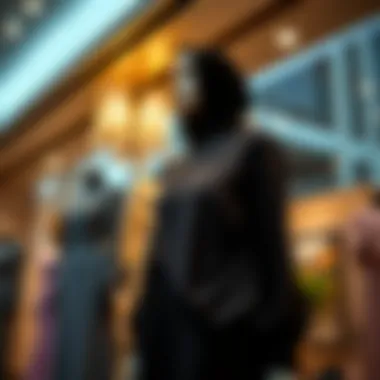

- Cardigans and Boleros: Consider lightweight cardigans or cropped boleros that can add warmth without overshadowing the dress. A delicate knit can offer a soft touch that enhances feminine qualities.
- Turtle Neck Tops: Underneath sleeveless or low-neck dresses, lightweight turtle necks can maintain elegance while protecting against chilly events. They subtly add sophistication.
- Sheer Fabrics: Using sheer overlays provides lessons in contrast. A dress with a modest cut can become even more elegant when paired with a flowing sheer jacket.
Layering effectively ensures that one maintains modesty while also showcasing personal flair. The materials you choose are equally important—acknowledge breathable fabrics that won’t cause discomfort while bringing an aesthetic pleasure.
Accessorizing with Purpose
Accessorizing can either make or break an outfit, especially when donning a modest dress. Thoughtful accessorizing serves the dual purpose of enhancing the outfit’s visual appeal while maintaining modesty. Consider the following:
- Statement Jewelry: A well-placed piece of jewelry can draw focus and add sparkle without overwhelming the overall look. Opt for pieces that complement the neckline and color of your dress.
- Belts: A belt can define the waistline while providing structure. Whether it’s a fabric tie or a sleek leather belt, it can break up the monotony of the dress and provide that tailored flair.
- Tote Bags: Choose bags that are both functional and stylish. A classic tote can fit your essentials while adding sophistication to the ensemble. It speaks volumes about personal style while remaining practical.
Incorporating these accessories can transform a simple fit into a modishly chic outfit that still aligns with your modest attire goals. With a touch of creativity and an eye for detail, you can flexibly align your wardrobe with your comfort and individual expressions.
"Fashion should reflect who you are and what you stand for, while taking into consideration where you are headed."
Integrating these tips will undoubtedly enhance your ability to navigate the world of modest formal attire, making choices that satisfy your stylistic appetite without sacrificing comfort.
Tailoring and Customization
Tailoring and customization play pivotal roles in creating a polished look when it comes to modest and affordable formal dresses. Fashion isn’t just about purchasing a piece off the rack. It’s about finding something that complements one’s individual body shape and preferences. Tailoring allows for the refinement of fit, transforming an average dress into something that feels tailor-made. Those special adjustments can elevate an outfit from plain to pretty in no time.
Understanding Fit and Measurement
When discussing tailoring, the first step is understanding fit and measurement. Each body type is unique, and what looks great on one person may not suit another. Common issues like too-tight sleeves or too-loose waistlines distract from the overall appearance of a dress. Here’s where precise measurements come into play.
Before purchasing a dress, consider taking your measurements:
- Bust: Measure around the fullest part of your bust.
- Waist: Measure around the narrowest part of your waist.
- Hips: Measure around the widest part of your hips.
- Length: Determine the desired length from shoulder to hem.
Accurate measurements not only help in choosing the right size but also guide any required alterations. The right fit hugs the body in all the right places, creating a flattering silhouette. For an extra layer of comfort, consider wearing undergarments that complement your dress style, as this can significantly influence how a garment drapes on the body.
When to Consider Alterations
Knowing when alterations are necessary can save one from the headache of wearing a dress that’s just not fitting right. A couple of tell-tale signs can alert you that it might be time to take a trip to a tailor:
- Discomfort: If you're constantly adjusting your dress, it likely needs some tweaking.
- Varying Fits: If you’re between sizes and find a modest dress that’s close but not quite fitting perfectly.
- Style Enhancements: Sometimes, a dress may look good but want a little enhancement—like adjusting sleeve length or adding padding for support.
Alterations can include simple fixes like hemming a dress, taking in the sides, or adjusting a neckline. These changes can ensure your modest formal dress not only fits well but also reflects your style preference. A well-tailored dress feels like a second skin, boosting confidence and style in any formal setting.
Each adjustment, no matter how small, contributes to the overall aesthetic of the outfit, supporting both modesty and elegance.
In the realm of modest fashion, striving for a perfect fit through tailoring is not just about appearance; it's about feeling good in your skin. Mastering the art of carrying oneself with confidence can have a lasting impact on how one presents in any formal gathering. Tailoring reveals the power of quality over quantity.
Navigating Size Inclusivity
Navigating the often complex landscape of size inclusivity is crucial when considering modest and affordable formal dresses. In a world where body positivity and diversity are increasingly prioritized, it’s vital to reflect this understanding in fashion. It’s not merely a matter of supplying larger sizes; it's about redefining beauty standards and creating environments where every body feels represented and celebrated.
Understanding Size Representation
Size representation in the fashion industry has long been a double-edged sword. Traditionally, the focus has been primarily on sample sizes that cater to a narrow range of body types, often alienating a significant portion of the population. However, recent movements have brought to light the importance of offering varied sizes. Understanding how size representation affects consumer choices is paramount.
When formal dresses are designed with inclusivity in mind, it allows individuals of all shapes and sizes to find pieces that not only fit well but also resonate with their personal style. Brands that embrace this inclusivity often see a broader customer base. Customers are drawn to brands that make them feel seen and valued. Moreover, when size ranges extend beyond the conventional, this opens up a dialogue about body types that have historically been ignored.
Some benefits of enhanced size representation include:
- Increased sales: Attracting a wider market share leads to higher sales volumes.
- Brand loyalty: Consumers are more likely to return to brands that cater to their needs.
- Positive brand image: Companies seen as leaders in size inclusivity benefit from enhanced reputation.
Bridging the Gap Between Sizes
Bridging the gap between sizes goes beyond just offering a wider range; it involves understanding the fit and functionality of garments. Not every body is the same, and this means that sizing should accommodate variations in body shape, not just size alone. Many individuals find it challenging to locate formal dresses that fit well, partly due to the inconsistency in sizing across different brands. This inconsistency can lead to frustration and discouragement.
When brands take the initiative to engineer dresses that cater specifically to various body types, they contribute to a more inclusive fashion landscape. For instance, incorporating adjustable features like elastic waistbands or wrap designs can benefit a wide range of body shapes. Here are some strategies brands can employ to bridge this gap:
- Offering extended size charts: More detailed size guides help customers find their proper fit.
- Incorporating flexible materials: Fabrics with stretch allow for better fit across diverse body shapes.
- Real-life models for marketing: Utilizing models of various sizes in campaigns can help consumers envision how the clothes will fit them.
"Fashion should never be a compromise. It should embrace diversity at every size and shape."
By acknowledging and addressing these issues, the fashion industry can move towards creating a more inclusive space where everyone feels empowered in their style.
For further insights on body inclusivity and representation, consider exploring resources from The Fashion Spot and articles from Harvard Business Review.
Building a Capsule Wardrobe
Creating a capsule wardrobe is an effective way to streamline your closet while maintaining fashionable and modest options. It’s all about having a collection of versatile pieces that can be mixed and matched, eliminating the clutter of rarely worn items. Particularly in the realm of modest formal wear, a well-thought-out capsule can not only save time when dressing but also ensure you always look put together without breaking the bank.
The Benefits of a Capsule Wardrobe
A capsule wardrobe makes getting dressed a breeze. When all the pieces are thoughtfully chosen, they should harmonize well together. This means that every dress or accessory will have multiple uses across various occasions. For example, a chic navy dress can be styled for a wedding with elegant heels and statement jewelry, or can be dressed down for a professional setting with a tailored blazer and flats. This versatility is key for modest pieces, as it offers options that don’t sacrifice style while respecting different dress codes.
Essentials for a Versatile Collection
When building your capsule wardrobe, consider the following essentials that work well for formal events while remaining affordable:
- A Classic Little Black Dress: The LBD is a timeless staple. Opt for one with sleeves or a high neckline to keep it modest yet stylish.
- A Wrap Dress: This style flatters many body types and can be adjusted for comfort. Look for fabrics like chiffon or jersey, which drape beautifully.
- Tailored Trousers: A good pair of trousers can go a long way. They can be worn with blouses or layered under dresses for a different vibe.
- Elegant Blouses: Choose a few blouses that can easily be paired with your bottoms. Look for gentle fabrics with interesting textures or subtle patterns.
- A Versatile Skirt: A-line or maxi skirts give plenty of room for movement and comfort while being stylish. Ensure it sits comfortably at the waist and falls at a flattering length.
- Quality Outerwear: A well-fitted blazer or a classic trench coat is perfect for layering. This is especially useful during transitional seasons.
By focusing on these essentials, you create a base that can cater to professional settings, formal gatherings, or celebratory events.
Mixing and Matching for Flexibility
Once these items are in place, the real fun begins. Mixing and matching allows you to craft unique outfits suited for various occasions without needing an overstuffed wardrobe. Here are some effective strategies for doing so:
- Color Coordination: Stick to a color palette that resonates with you. This may include neutral tones, pastels, or richer shades. When all items complement each other, the combinations are endless.
- Layering: Use layers wisely. For instance, a blouse under a dress can change its vibe dramatically, making it suitable for a different event. Don't shy away from different textures, as they can add interest to your outfit.
- Accessorizing Smartly: Accessories can transform a simple outfit into something special. Statement necklaces, elegant scarves, or classic handbags can give new life to your go-to pieces.
- Footwear Variety: Have a couple of different shoe styles that fit comfortably. An elegant pair of pumps can elevate a dress while classic flats offer casual sophistication.
Overall, the approach to creating a capsule wardrobe is both practical and liberating. With the right pieces at hand, the power to express your unique style in a modest and fashionable way becomes not only achievable but also enjoyable.
"A wardrobe with fewer pieces holds more potential than a full closet with nothing to wear."
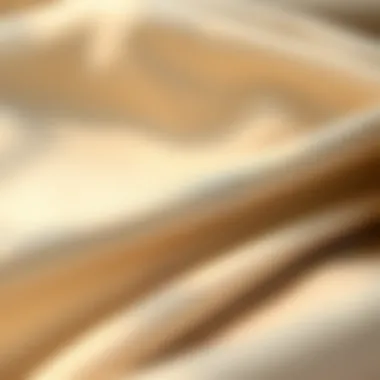

For more insights on building wardrobes, you can visit Wikipedia on Wardrobes. To explore fashion history that influences modern design choices, check out Britannica.
The Importance of Ethical Fashion
The conversation surrounding fashion has evolved tremendously in recent years, with ethical fashion emerging as a focal point. This section will clarify why ethical practices are essential, particularly within the scope of modest and affordable formal dresses. As consumers, it falls upon us to recognize that our choices have far-reaching consequences. It isn’t simply about looking good; it’s about contributing to a system that values humanity, craftsmanship, and the planet itself. Ethically sourced garments often reflect consideration for environmental sustainability and social justice, aligning purchase decisions with one's values.
Beyond mere economics, ethical fashion touches on a spectrum of values—trust, transparency, and community welfare. When shoppers choose to support brands that uphold ethical standards, they don’t just purchase a dress; they're endorsing a more sustainable and equitable fashion industry.
"Ethical fashion is not just about what you wear, it’s about how your choices impact the world around you."
Understanding Fast Fashion Impacts
Fast fashion is generally known to be a double-edged sword. On one hand, it provides inexpensive clothing options that quickly accommodate changing trends. On the other hand, its effects are often devastating. The environmental toll of fast fashion is immense; it contributes to landfill waste and pollution, with many garments tossed aside after just a few wears. From excessive water consumption to chemical pollution, the infrastructure behind rapid clothing production works in stark contrast to the principles of modesty and sustainability.
Moreover, fast fashion often relies on dubious labor practices, including underpaying workers and neglecting their rights. Shoppers need to be aware that each purchase they make indirectly supports this cycle, making it crucial to consciously select brands that advocate for better labor conditions and sustainable manufacturing processes.
It's a systemic issue that requires awareness, but becoming informed can empower consumers to make better choices.
Supporting Ethical Brands
Supporting brands that prioritize ethics is a crucial step toward a more responsible fashion industry. Doing so involves looking beyond aesthetics to consider the backstory of each piece. Start by researching brands that emphasize transparency in their supply chains. Ethical brands often share details about where and how their clothing is made, providing insight into their production processes. For instance, brands like Reformation and People Tree are known for their sustainable practices and commitment to fair labor conditions.
Benefits of supporting ethical brands include:
- Environmental Awareness: Less waste and sustainable sourcing reduce carbon footprints.
- Social Responsibility: Encouraging fair wages and safe working environments for garment workers.
- Quality over Quantity: Often, these brands emphasize craftsmanship, leading to longer-lasting garments.
The next time you consider purchasing formal attire, think not only about your styling preferences but also about the broader implications of your choice. Explore reputable platforms like Good On You which rates brands based on their environmental and labor practices, allowing consumers to make informed decisions while shopping for that perfect modest dress.
In summary, ethical fashion is not merely a trend; it's a movement toward a better future. As you navigate the world of modest and affordable formal dresses, keep this framework in mind. Your choices can spark significant change, fostering a fashion landscape where modesty and ethical standards go hand-in-hand.
Personal Expression Through Fashion
Fashion is not merely about clothing; it's a profound canvas for personal expression. In the realm of modest and affordable formal dresses, this concept takes on even more gravity. The attire one chooses speaks volumes about individual values, beliefs, and creativity. When selecting a dress for a formal occasion, the challenge is to harmonize modesty with personal style, a task that can feel daunting yet rewarding.
Fashion allows individuals to project their identity without uttering a single word. For many, the dress might represent one's cultural heritage, a nod to traditions that span generations, or a contemporary reimaging of modesty. Simply put, how one dresses can articulate who they are and what they stand for in society.
As one navigates modest fashion, it becomes crucial to recognize that variety exists in style choices without sacrificing personal beliefs. There’s an ever-growing pool of designers bringing diverse perspectives into the industry, making it possible to find dresses that embrace an individual's unique approach to fashion while keeping modesty intact.
"Clothing is a form of self-expression; there are hints of our dreams sewn into every seam."
In this segment, you will explore two key avenues of personal fashion expression: finding your unique style and using fashion as a medium of expression.
Finding Your Unique Style
Seeking one’s unique style can feel like searching for a needle in a haystack, especially in a market filled with cookie-cutter options. But carving out a signature look doesn't need to be an uphill battle. It starts with understanding personal preferences and experimenting with different combinations.
- Assess Your Aesthetic: Reflect on colors and patterns that resonate with you.
- Inspiration Boards: Create physical or digital boards, gathering images of dresses that appeal to you. Consider how modesty plays a role in your favorite pieces.
- Tailored Pieces: Custom tailoring can elevate a simple dress into something extraordinary.
- Consultation and Feedback: Consulting trusted friends or stylists can provide insight and new perspectives on choices.
Ultimately, the goal is to wear what complements your personality and makes you feel comfortable. A well-chosen modest formal dress not only reflects societal values but also signals authenticity and individuality.
Using Fashion as a Medium for Expression
Using fashion as a tool for expression goes beyond aesthetic choices. It's about communicating identity, beliefs, and emotions through the garments one wears. In modest dressing, this becomes an art in itself.
- Cultural Representation: For many, modest dresses can be tied to culture or religion, offering a visible symbol of pride. Wearing a dress that adheres to these values can affirm one's heritage.
- Emotional Connection: Certain fabrics, colors, or fits can evoke feelings, ranging from confidence to nostalgia. Selecting a dress that resonates emotionally reinforces the bond between attire and identity.
- Trend Interpretation: Perhaps you favor modern design trends but wish to adapt them to modest fashion. That’s perfectly acceptable. Adapting fashion trends while maintaining personal style can lead to innovative combinations.
In essence, when individuals embrace their unique styles and use clothing as a way to express themselves, they not only showcase their identity but also contribute to the broader narrative of modest fashion. Fashion is not shallow; it’s a storytelling medium, rich with meaning and substance.
Exploring Fashion History
Fashion history plays a crucial role in understanding how modest attire has developed over time, influencing today’s styles while shaping our perceptions of elegance and appropriateness. Exploring this topic not only illuminates the roots of contemporary modest fashion, but also highlights the cultural shifts and values that have informed dress styles throughout the ages. When one looks at clothing from various periods, it is clear that modesty often intertwined with practicality, necessity, and identity.
The Evolution of Modest Attire
Historically, modest attire has often been linked to either religious beliefs or social customs. From the long flowing gowns of the Victorian era, which emphasized a woman's virtue, to the a-symmetric cuts and longer hemlines of today’s designs, the evolution of modest attire reflects shifting norms regarding femininity and class. For instance, during the Renaissance, dresses featured voluminous skirts and layers, often hiding the body’s shapes. And yet, these same garments can now be appreciated not just for their modesty but also for their artistry and craftsmanship.
Certain styles, like the Maxi dress, draw directly from these historical influences where clothing served both an aesthetic and functional purpose. The acceptance and resurgence of modest fashion in recent years are a testament to how traditional values can dance gracefully alongside modern interpretations, allowing for personal expression without stepping too far away from cultural expectations.
Impact of Historical Events on Fashion Trends
Historical events significantly impact fashion trends and the cultural perception of modesty. During times of societal upheaval, like World War II, the practicality of women’s clothing transformed. Many opted for more functional attire, balancing modesty with the need for ease of movement while taking on traditionally male roles during the war effort. This period generated a paradigm shift, where dresses still reflected femininity but also incorporated functionality.
"Fashion is not just about looks; it also mirrors society's ethos, norms, and the very core of what we value at particular times."
The hippie movement of the 1960s also altered perceptions of modest fashion, embracing free-spirited styles characterized by flowing fabrics and natural dyes, which gave fertility to a range of designs that respected modesty while emphasizing personal freedom. The combination of historical influence coupled with the ongoing dialogue surrounding women's rights and individuality reshapes the formal wear landscape continuously.
By analyzing the threads of history, one gains a broader perspective on modest fashion. It illustrates not just what people wore, but why they wore it, enriching our understanding of contemporary trends in modest formal dresses. In today’s fashion world, designers often echo the past while innovating for a future that embraces modest elegance, emphasizing the ongoing conversation between history and personal expression.
Future Directions in Modest Fashion
The landscape of fashion continues to evolve, and modest fashion is carving out its niche more than ever. Understanding the future directions in modest fashion is pivotal, not just for consumers but also for designers and marketers. As society's values shift towards inclusivity and ethical consumption, modest fashion is beginning to reflect these trends.
Emerging Designers and Trends
A fresh wave of designers is stepping up to the plate, focusing on creating stylish, modest outfits that don’t skimp on personality. These emerging designers often bring a cultural richness that not only respects traditional values but also integrates modern aesthetics. They craft pieces that embody individuality while adhering to modesty standards, showcasing a remarkable blend of creativity and ethics. For instance, labels like Aab or Maha Khan are making waves by bringing innovation to conservative designs, featuring intricate embellishments and bold color florals that are anything but dull.
Moreover, trends such as asymmetrical hemlines, layered garments, and statement sleeves are sprouting up, which appeal to a younger audience eager for fashion that resonates with their values. As these new talents enter the scene, it will be fascinating to see how their designs inspire mainstream fashion, challenging the stereotype that modest fashion is bland.
"Fashion awards an identity. Modest fashion, therefore, needs variety and vibrancy to reflect the styles of the individuals wearing it." – Anonymous
The Role of Technology in Fashion
Technology is reshaping the entire fabric of the fashion industry and modest wear is not left behind. From virtual fitting rooms to social media marketing strategies, tech is enhancing accessibility in many areas. Brands like ModCloth use Augmented Reality (AR) for customers to visualize how pieces fit into their wardrobe before they make a purchase.
Additionally, the rise of platforms such as Etsy or Depop empowers consumers to find affordable, unique modest pieces crafted by designers from around the globe. This facilitates a deeper connection between the consumer and the creator, promoting sustainable practices and personal stories about the garments we wear.
Furthermore, data analytics provide insights into consumer behavior, allowing designers to cater their product offerings with precision. By analyzing purchase trends and customer feedback, brands can create tailored experiences that resonate with the target market. This kind of technology not only enhances the shopping experience but fosters brand loyalty and customer satisfaction.
Looking ahead, it's evident that modest fashion will be shaped by innovation, creativity, and a sense of community. As these elements intertwine, we can expect a more diverse and inclusive representation in the fashion industry, enabling everyone to feel comfortable and stylish at the same time.







